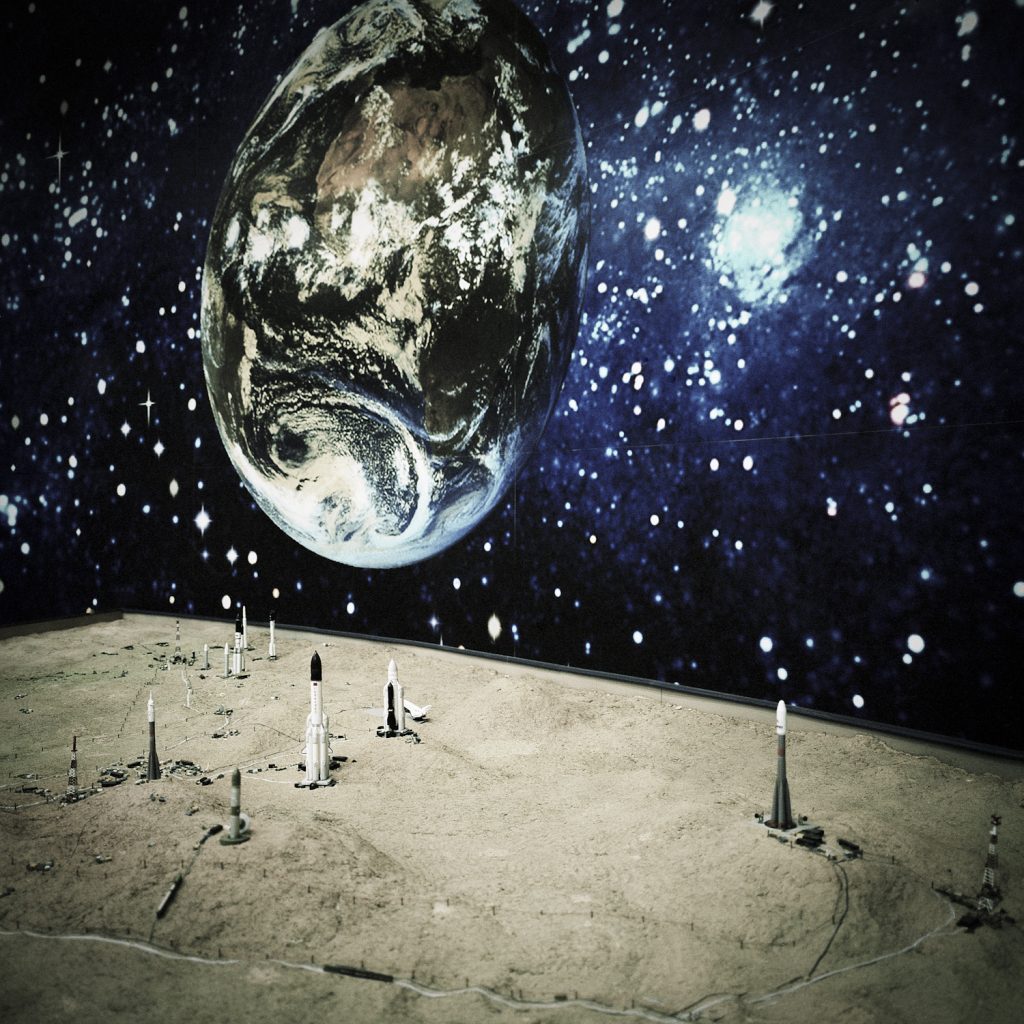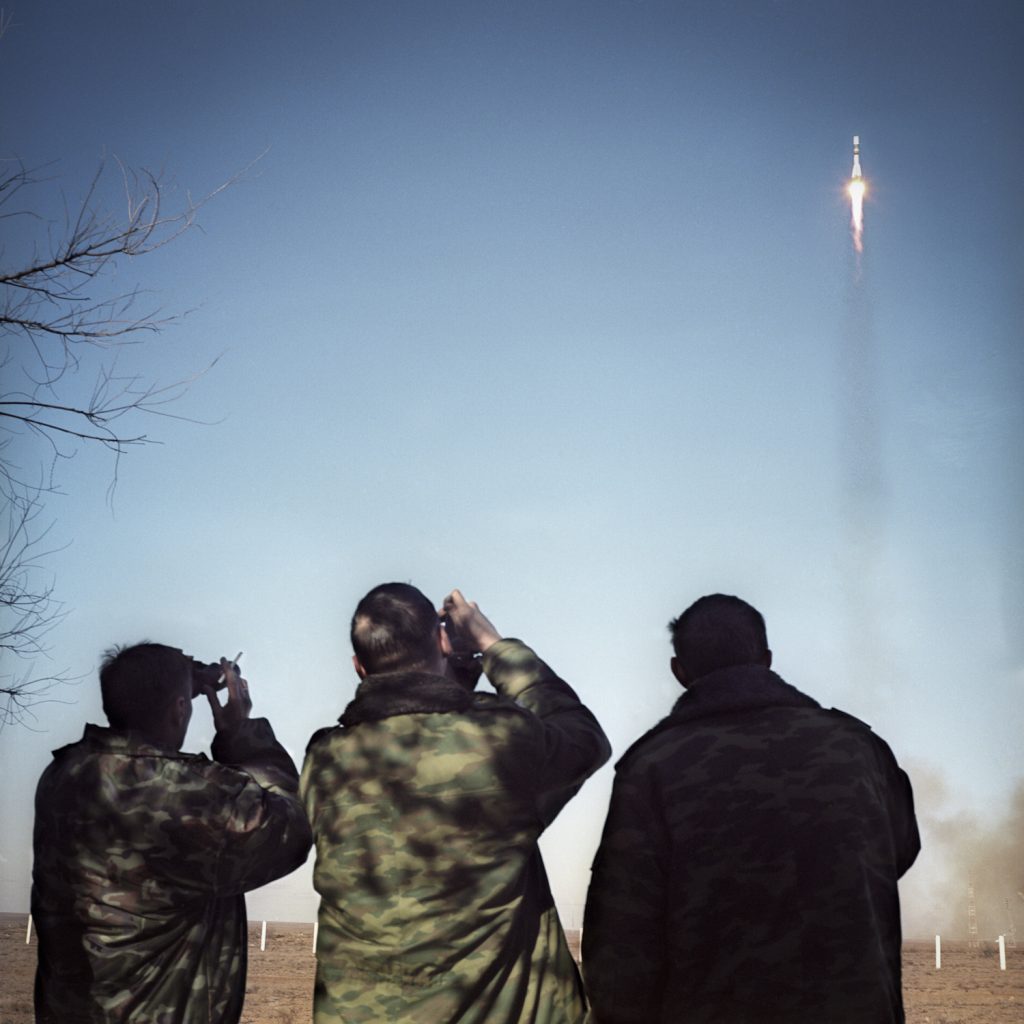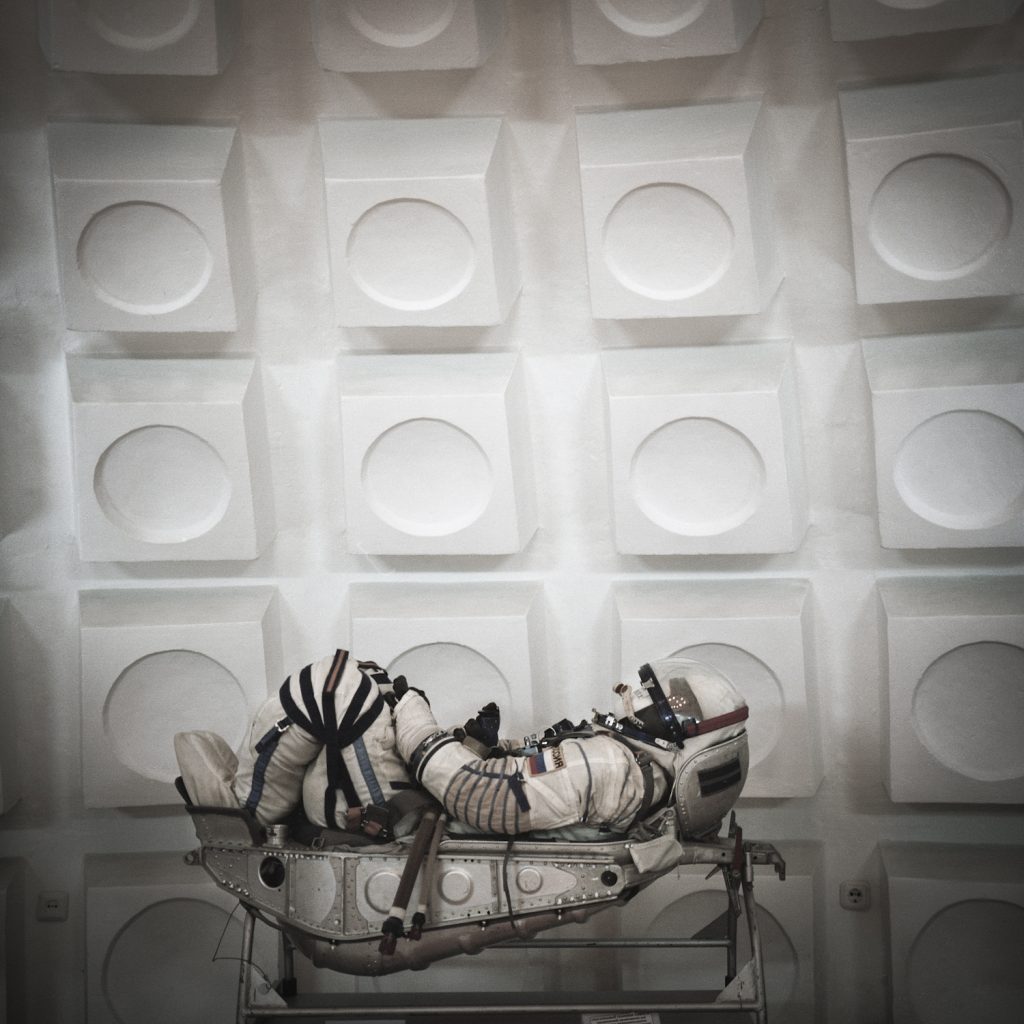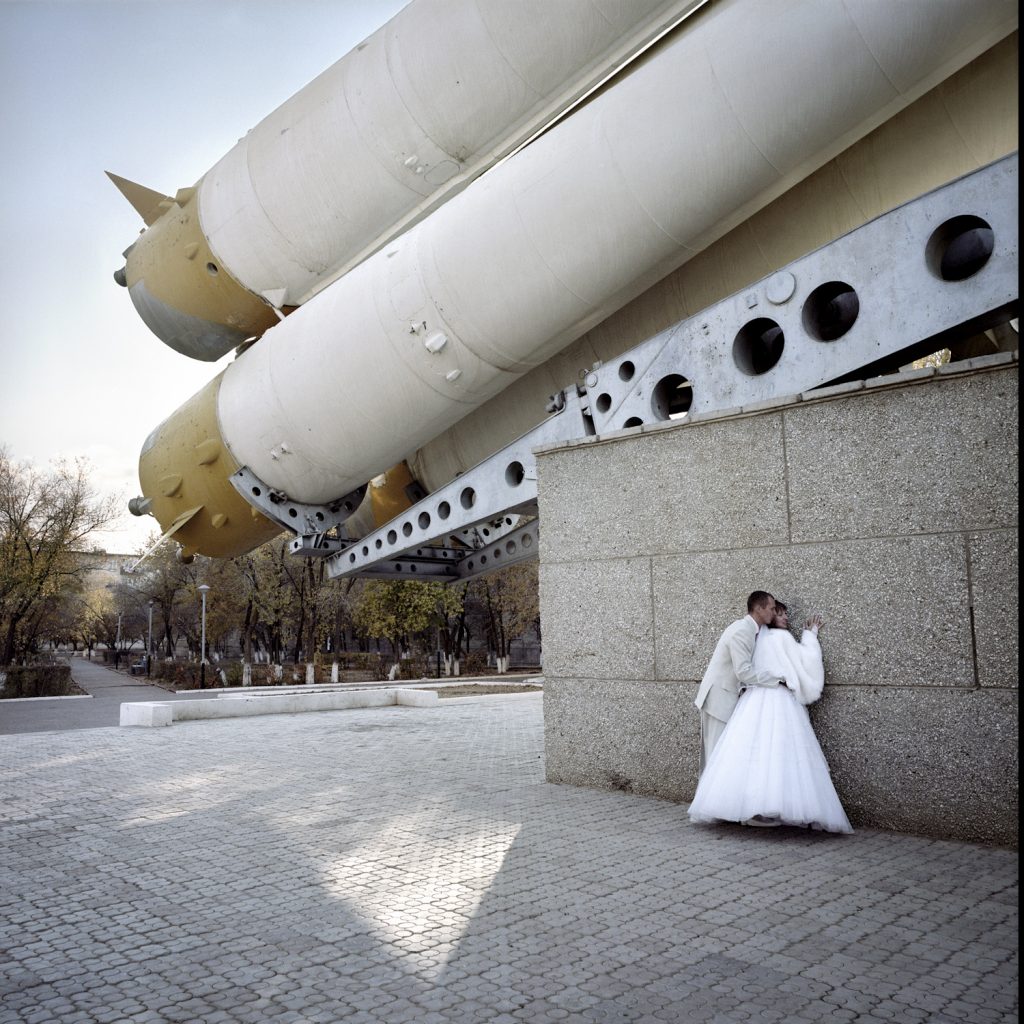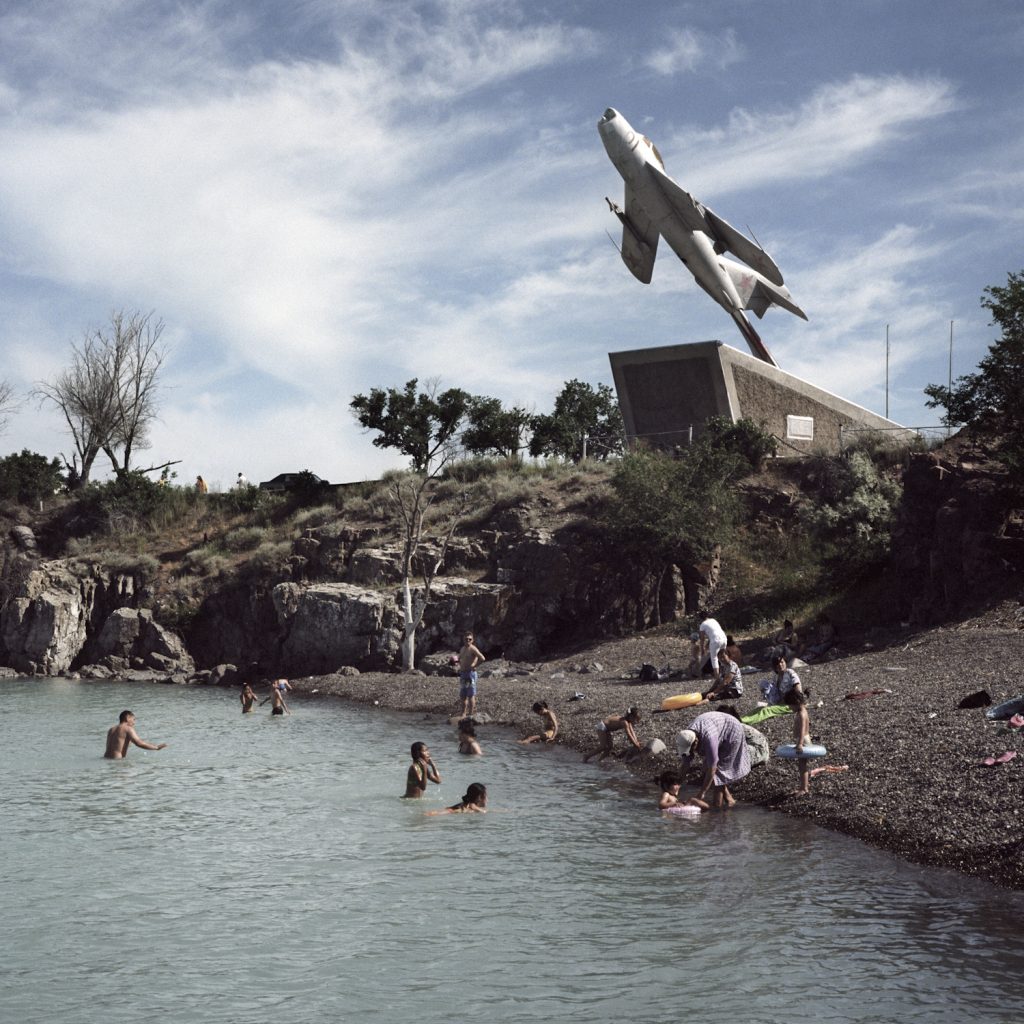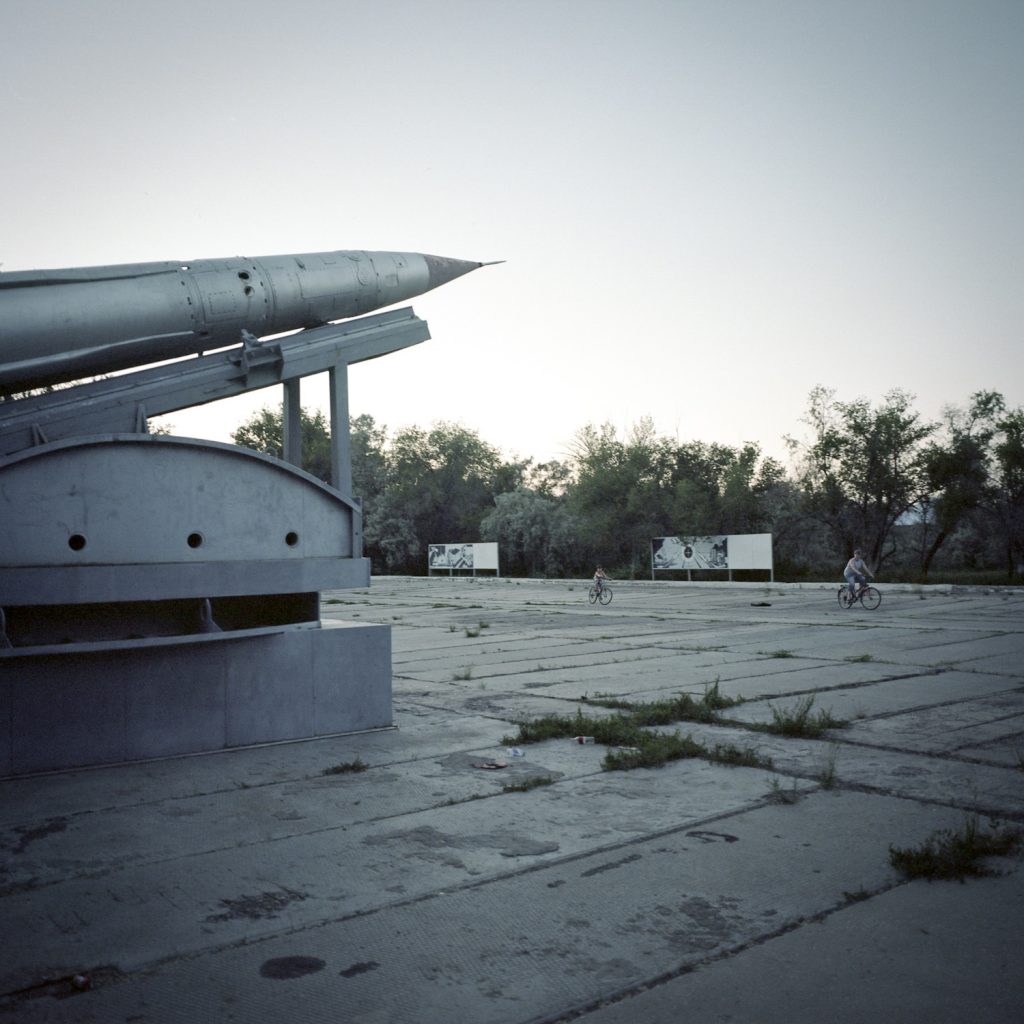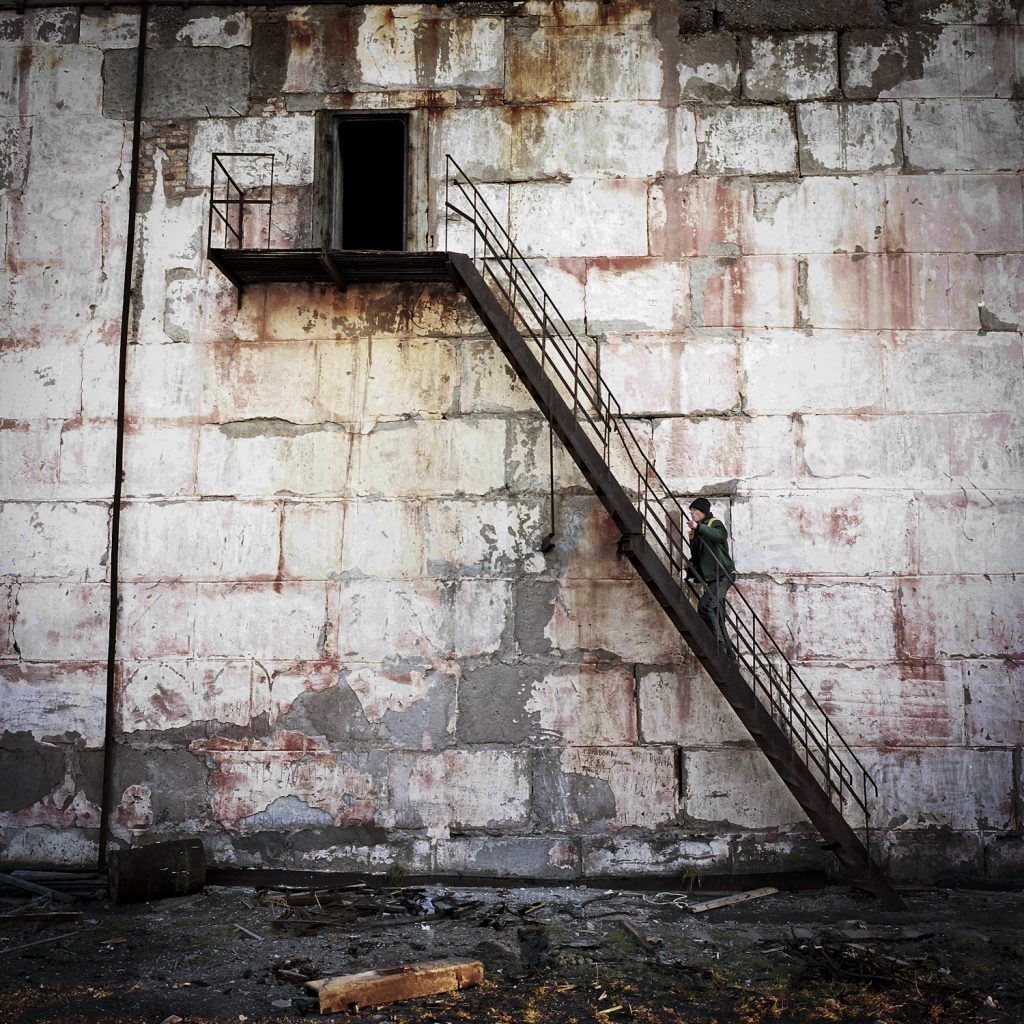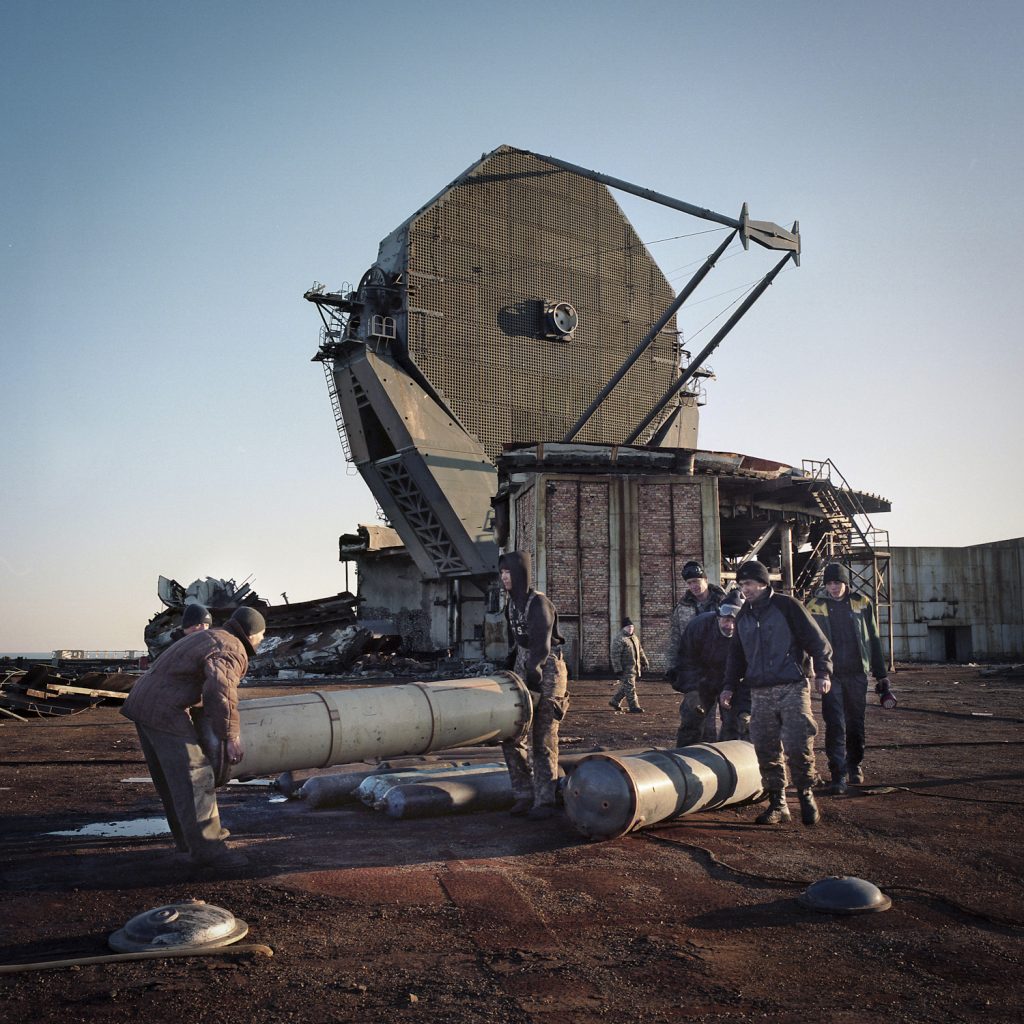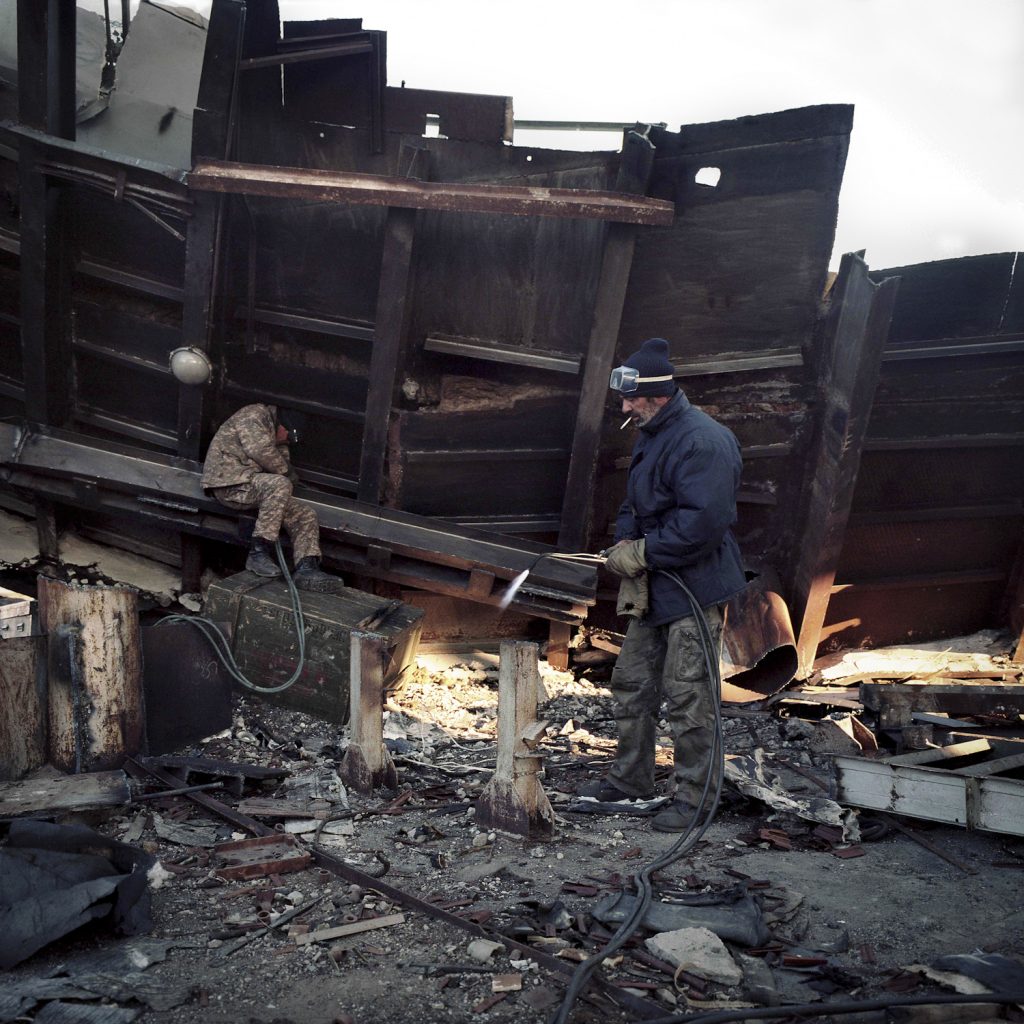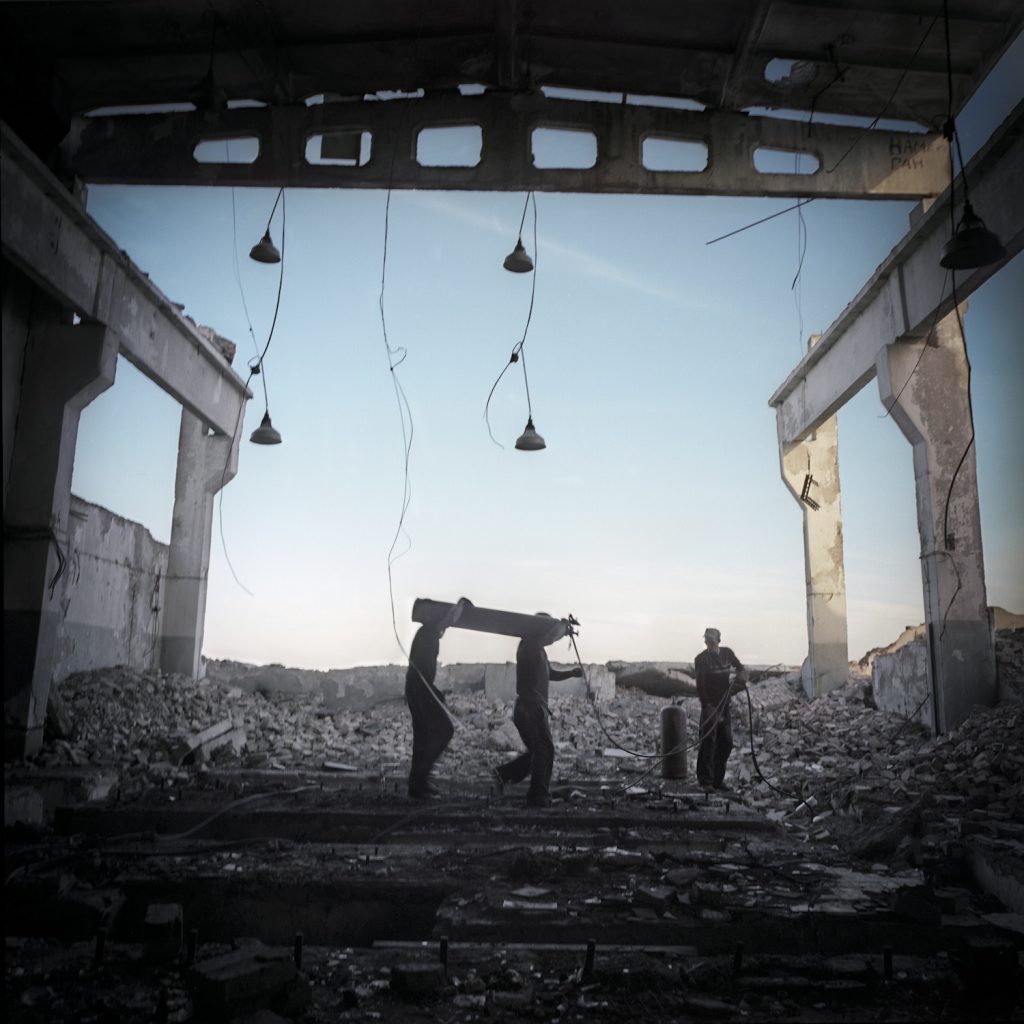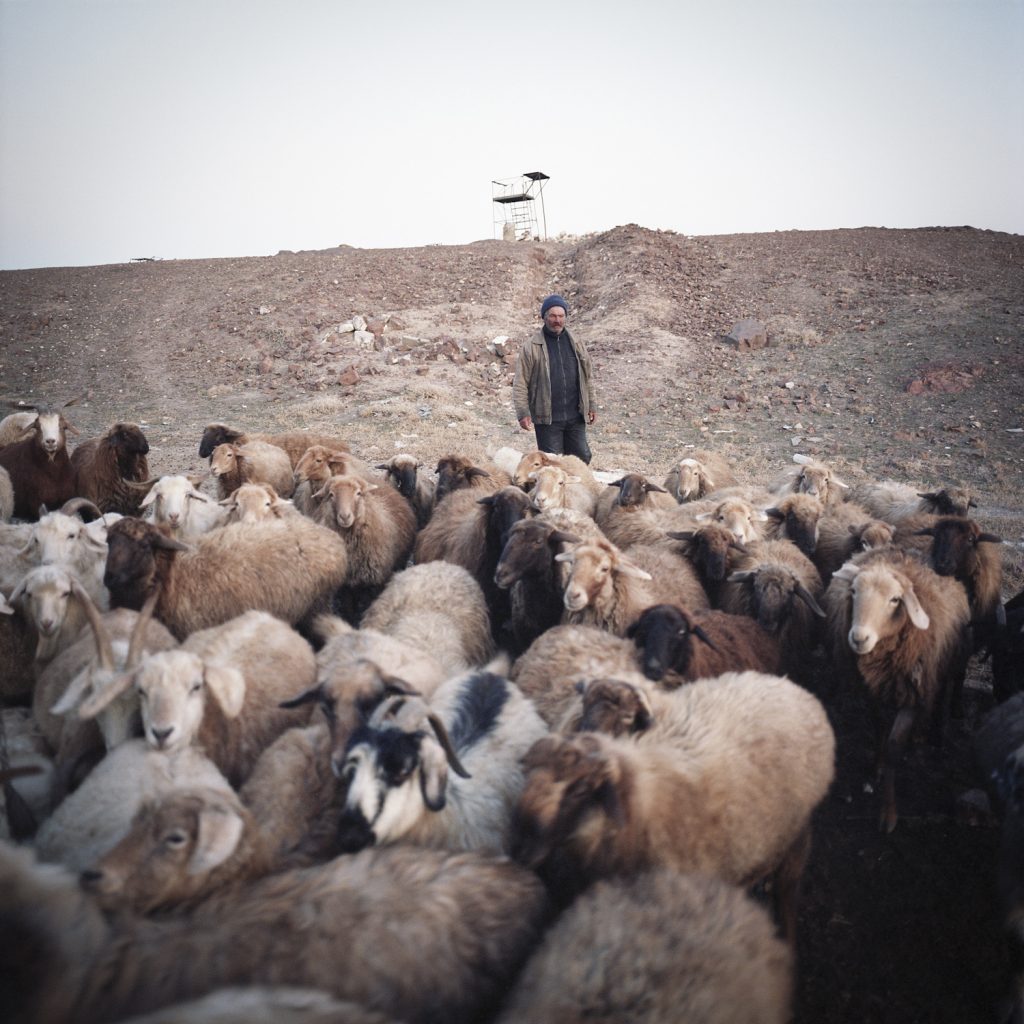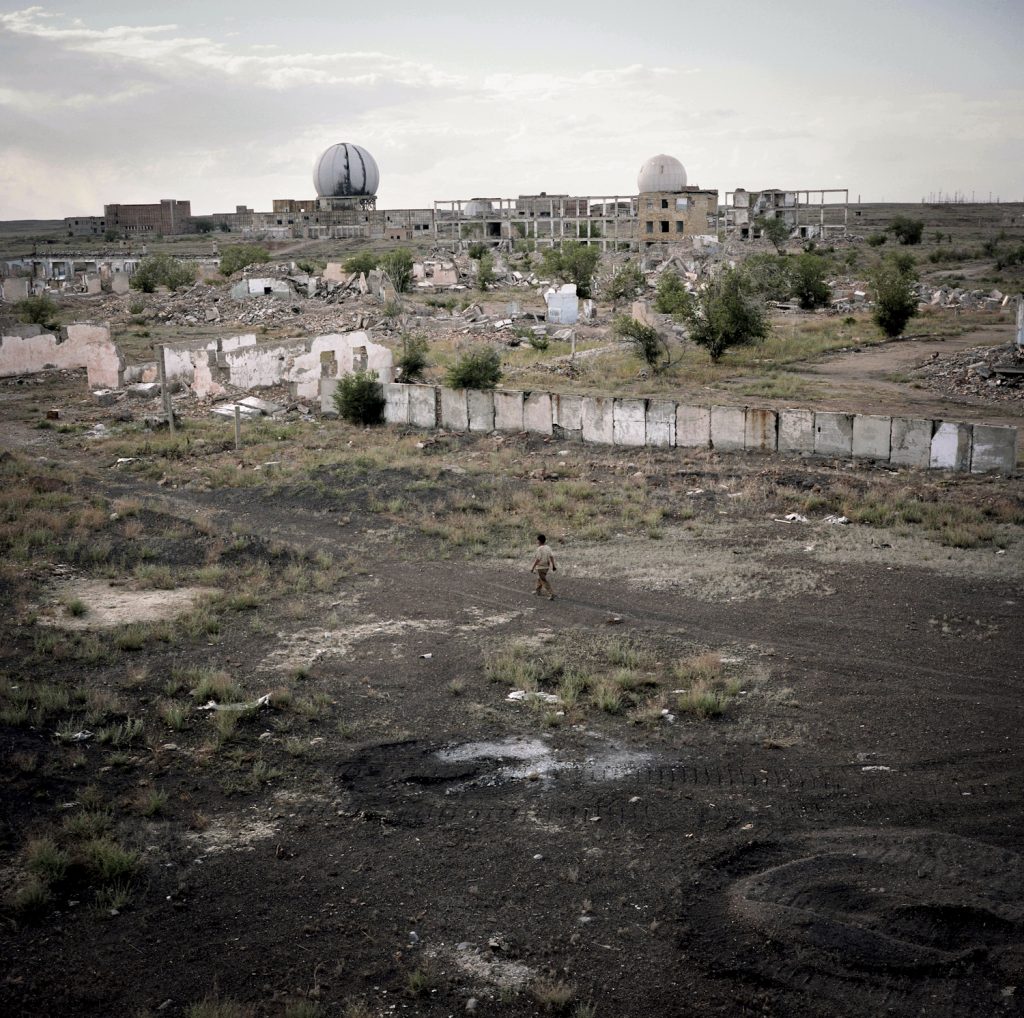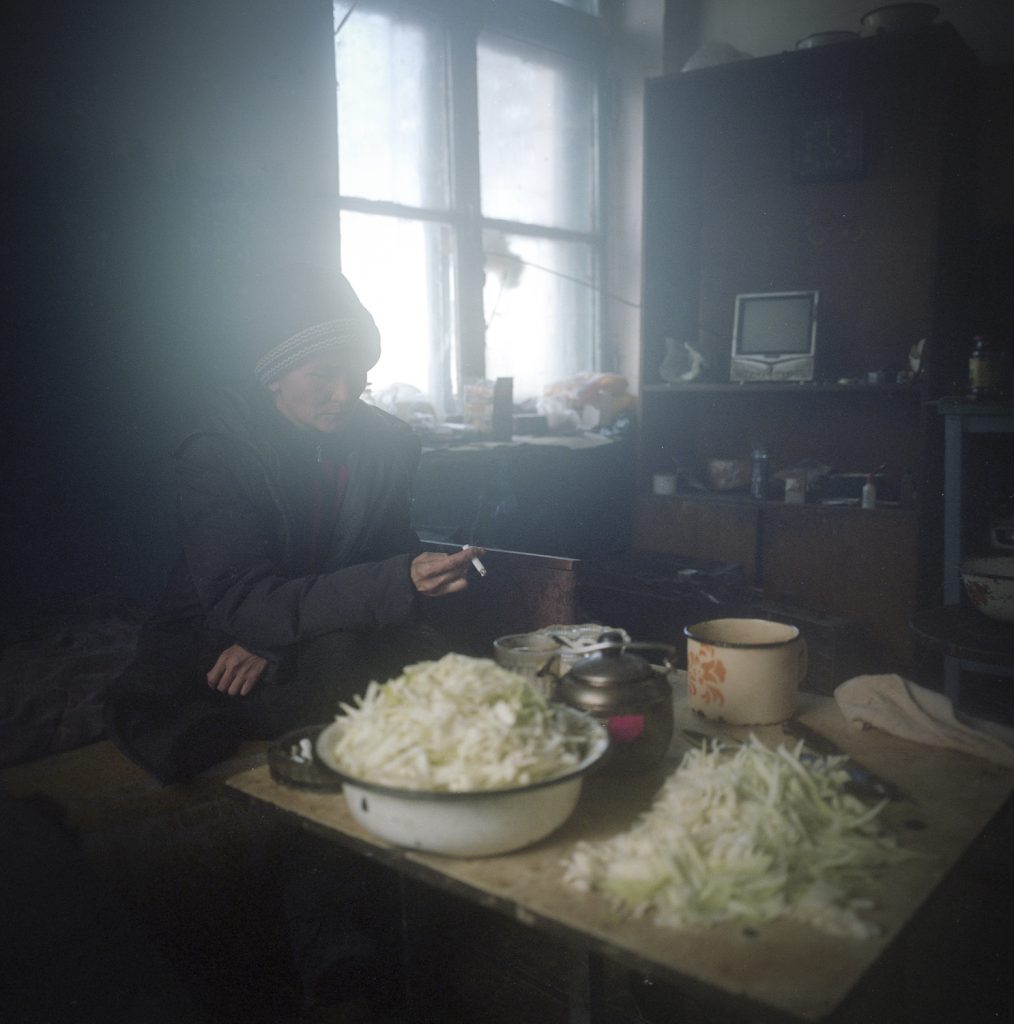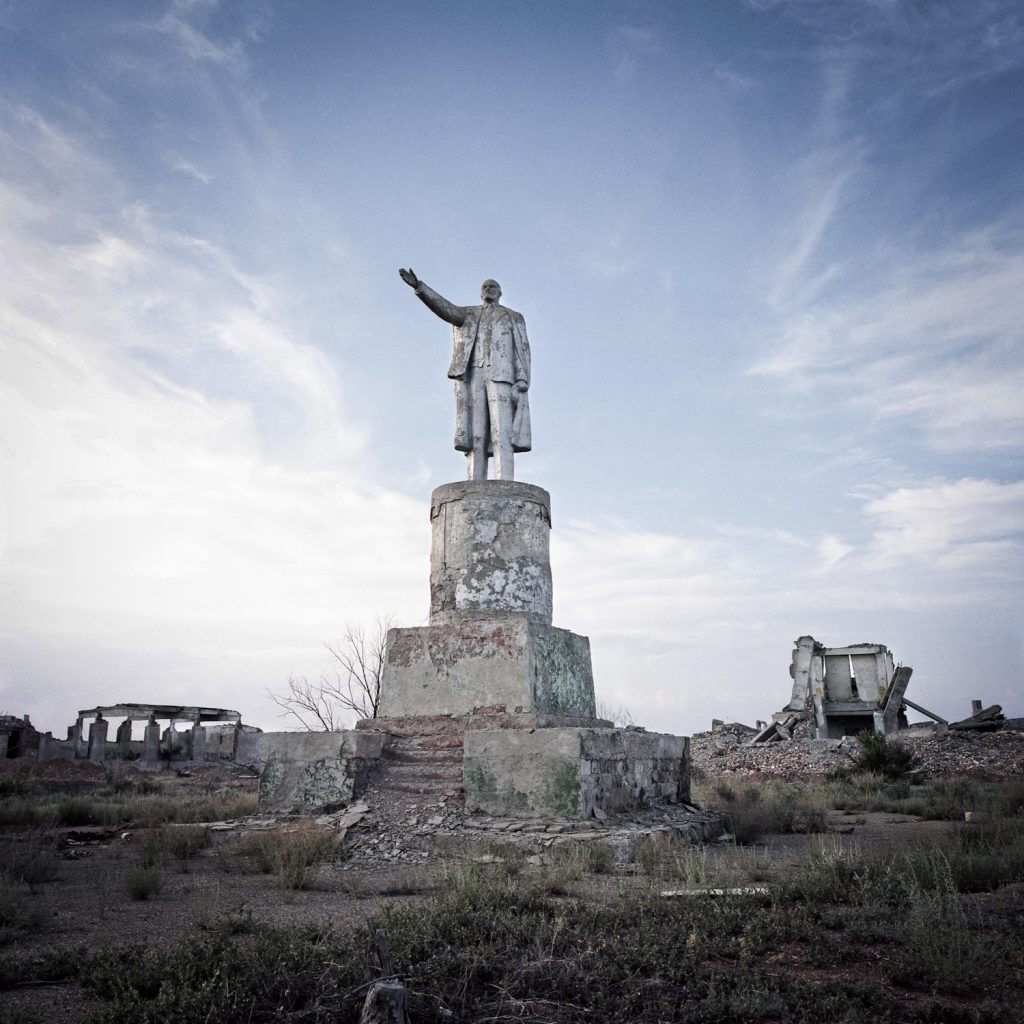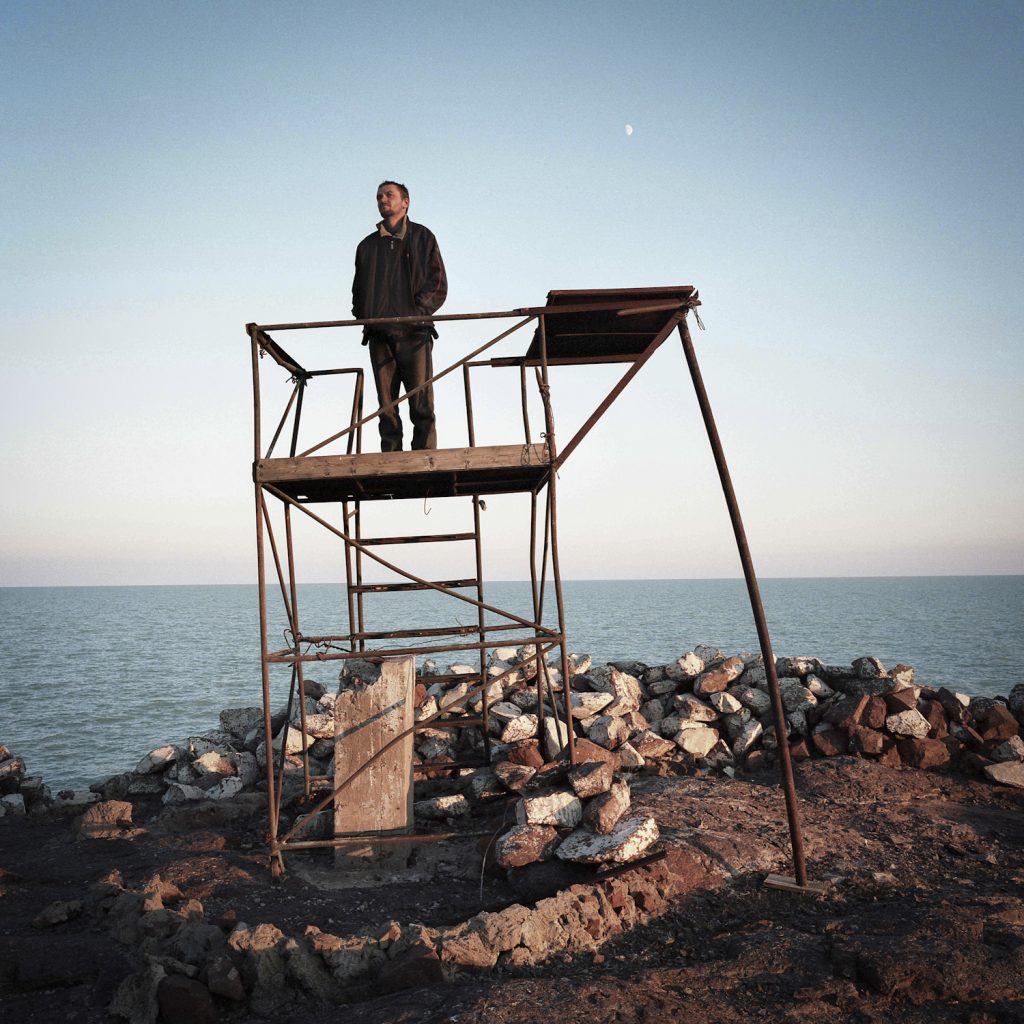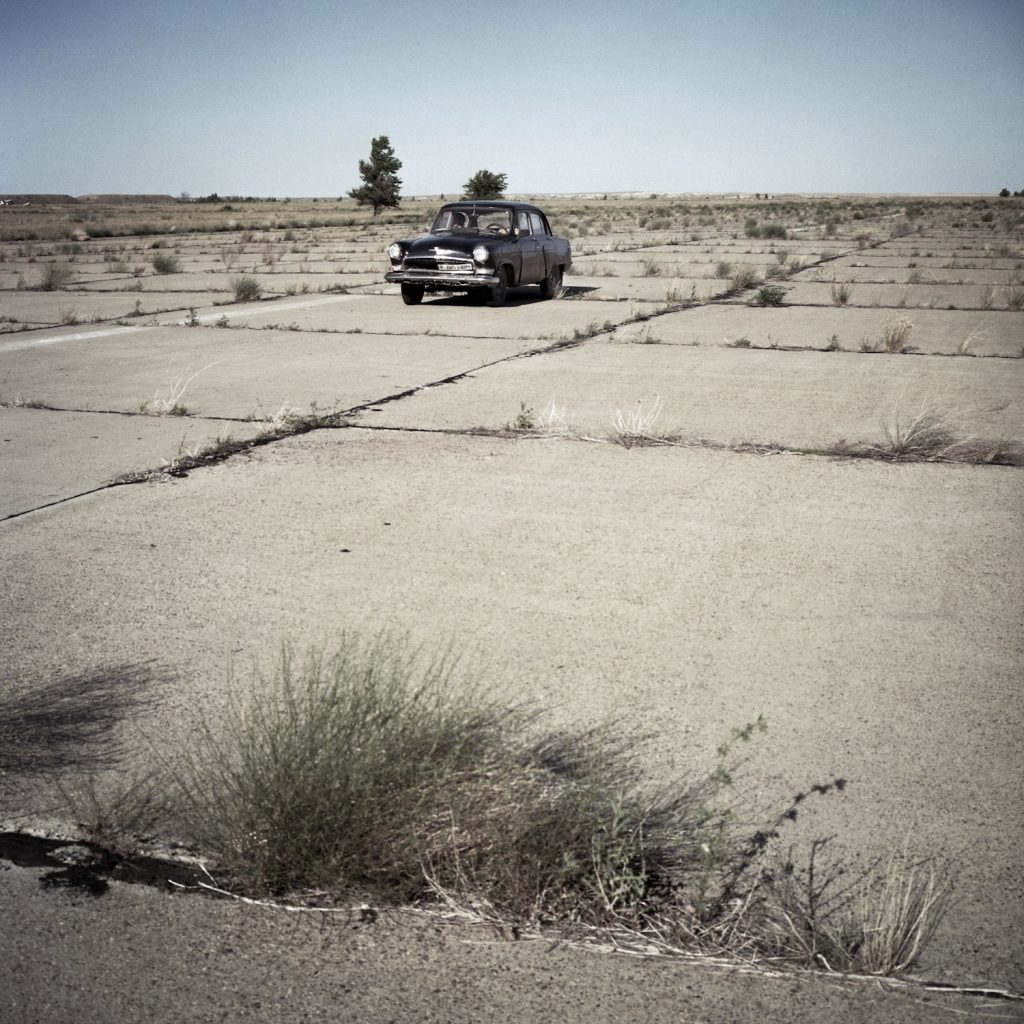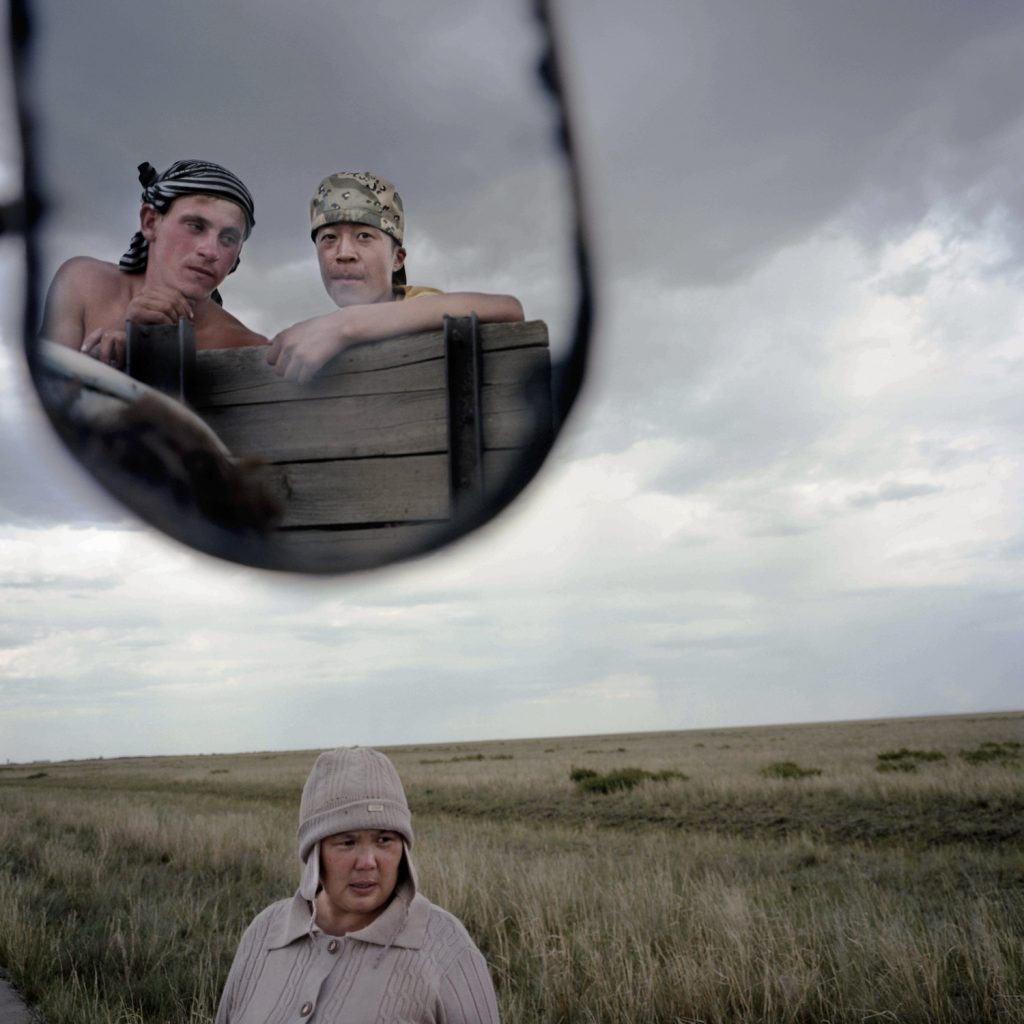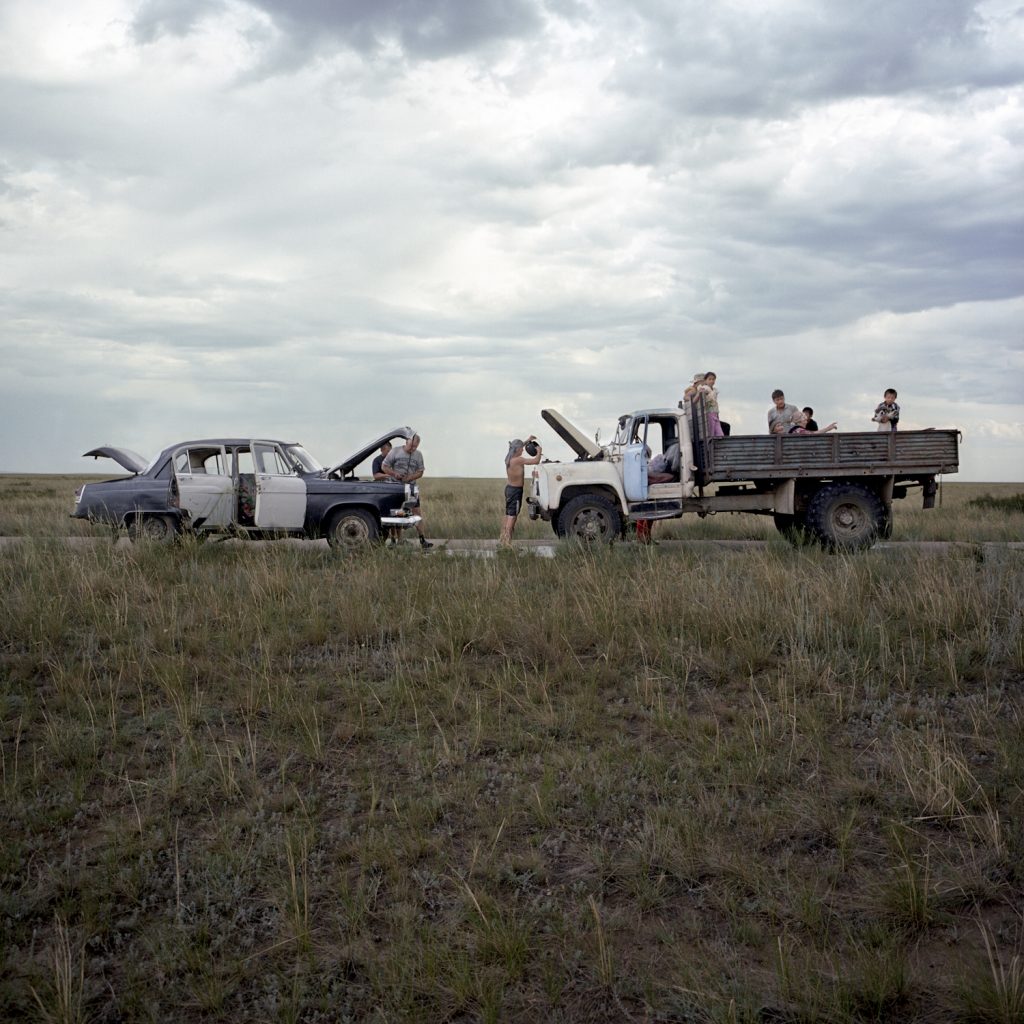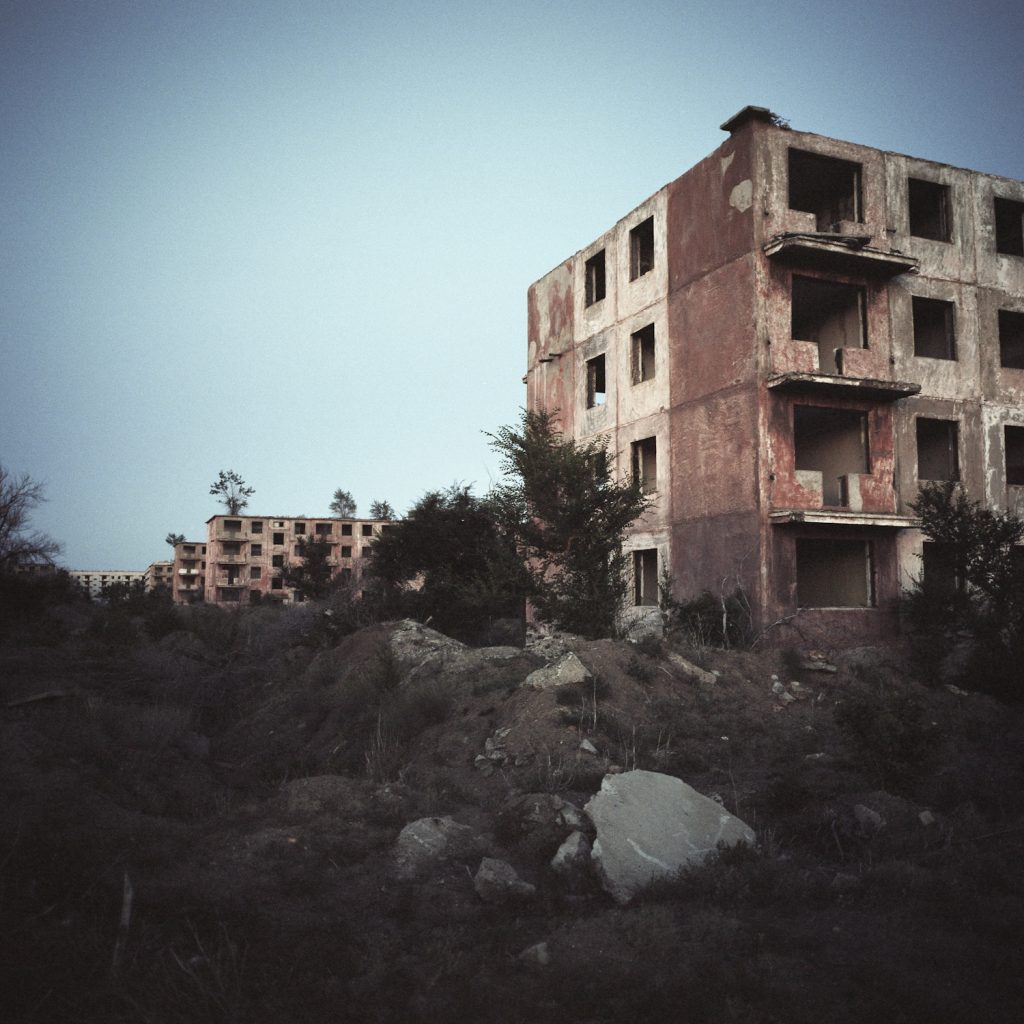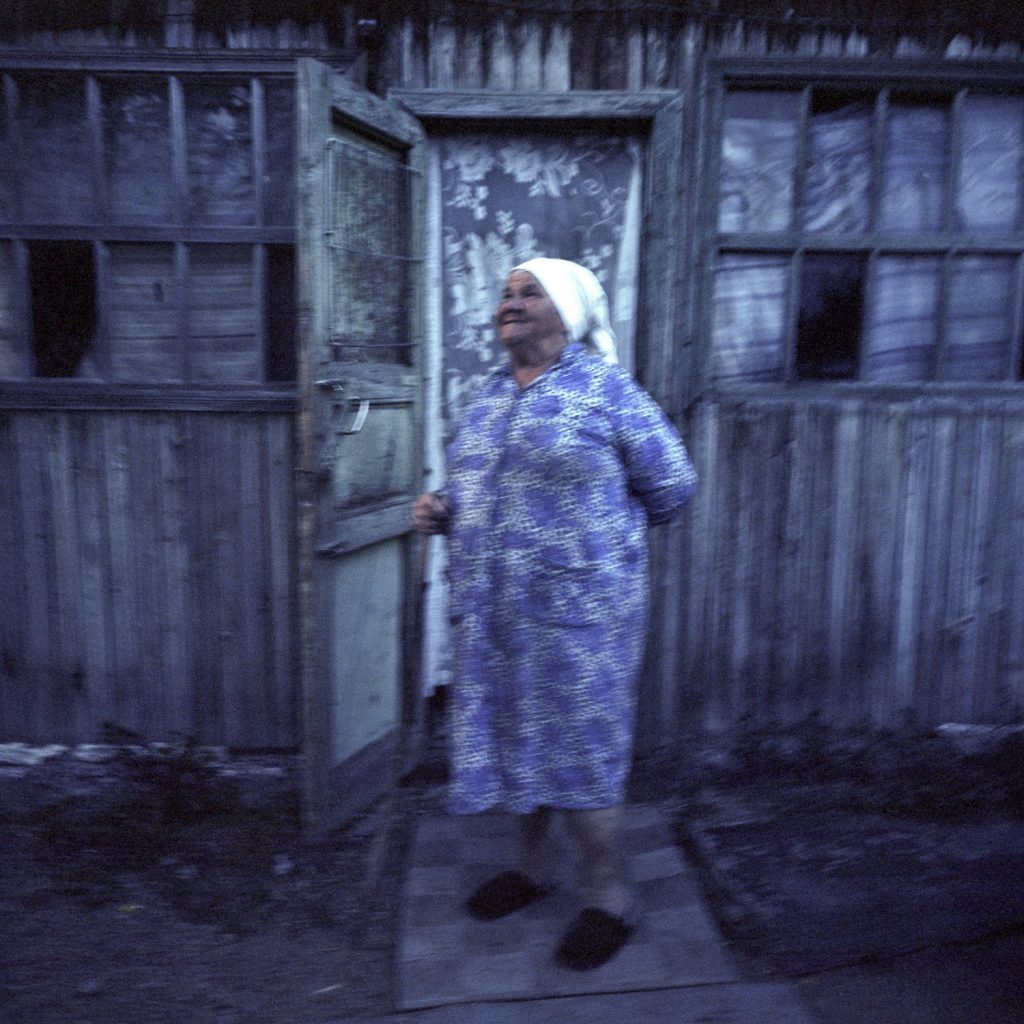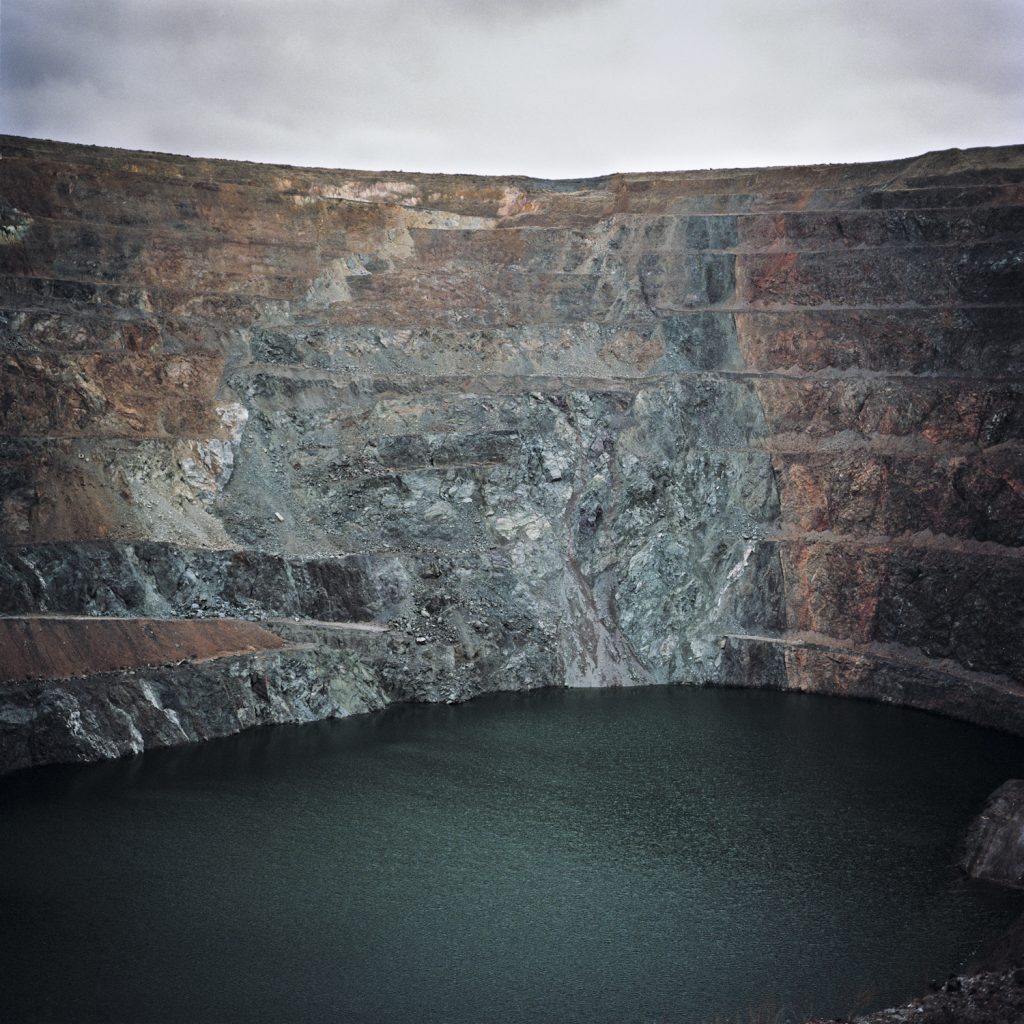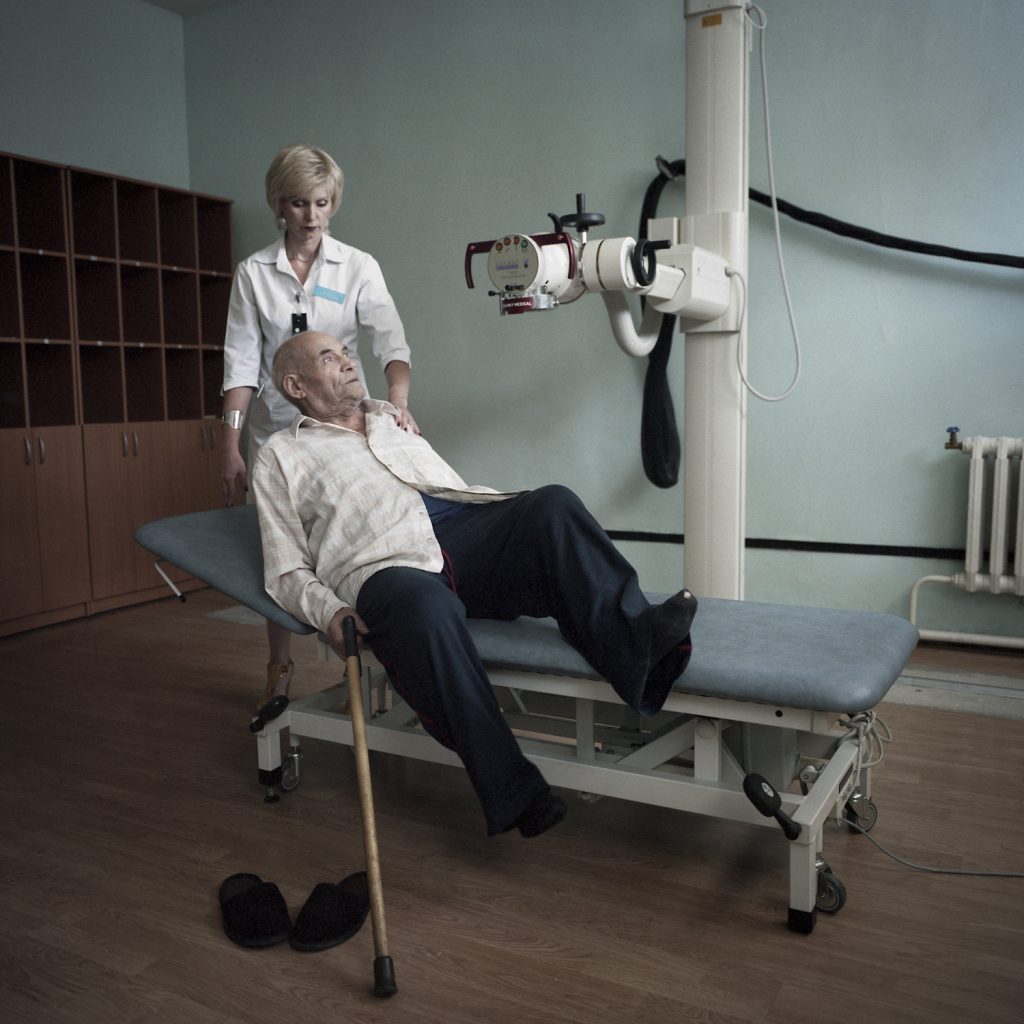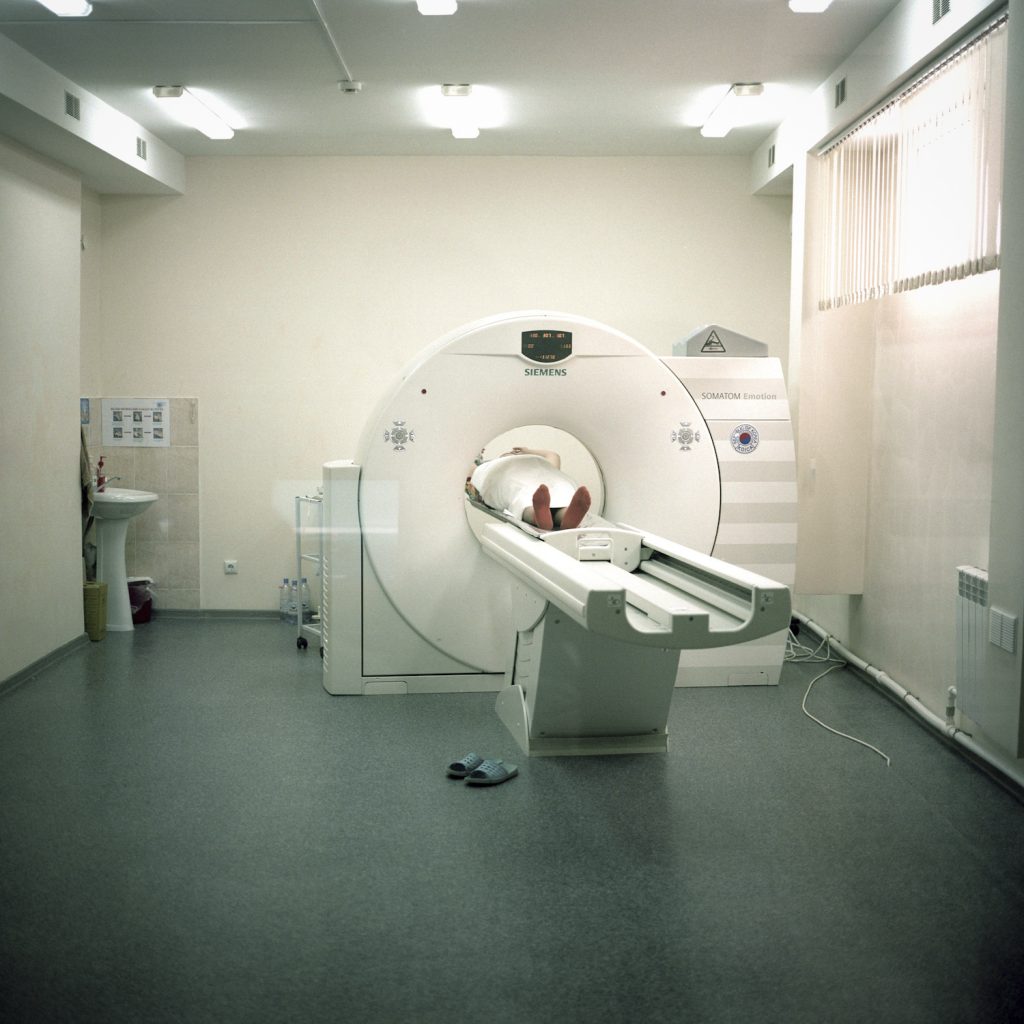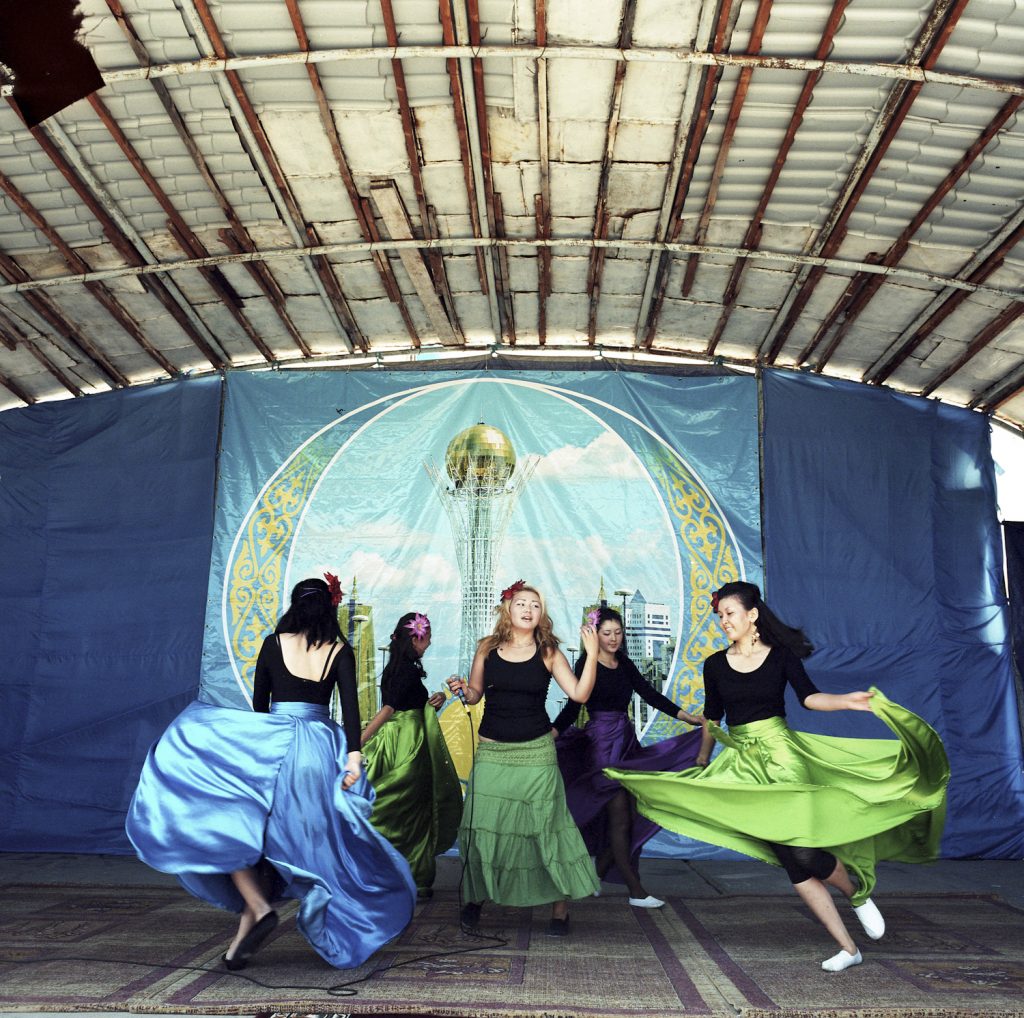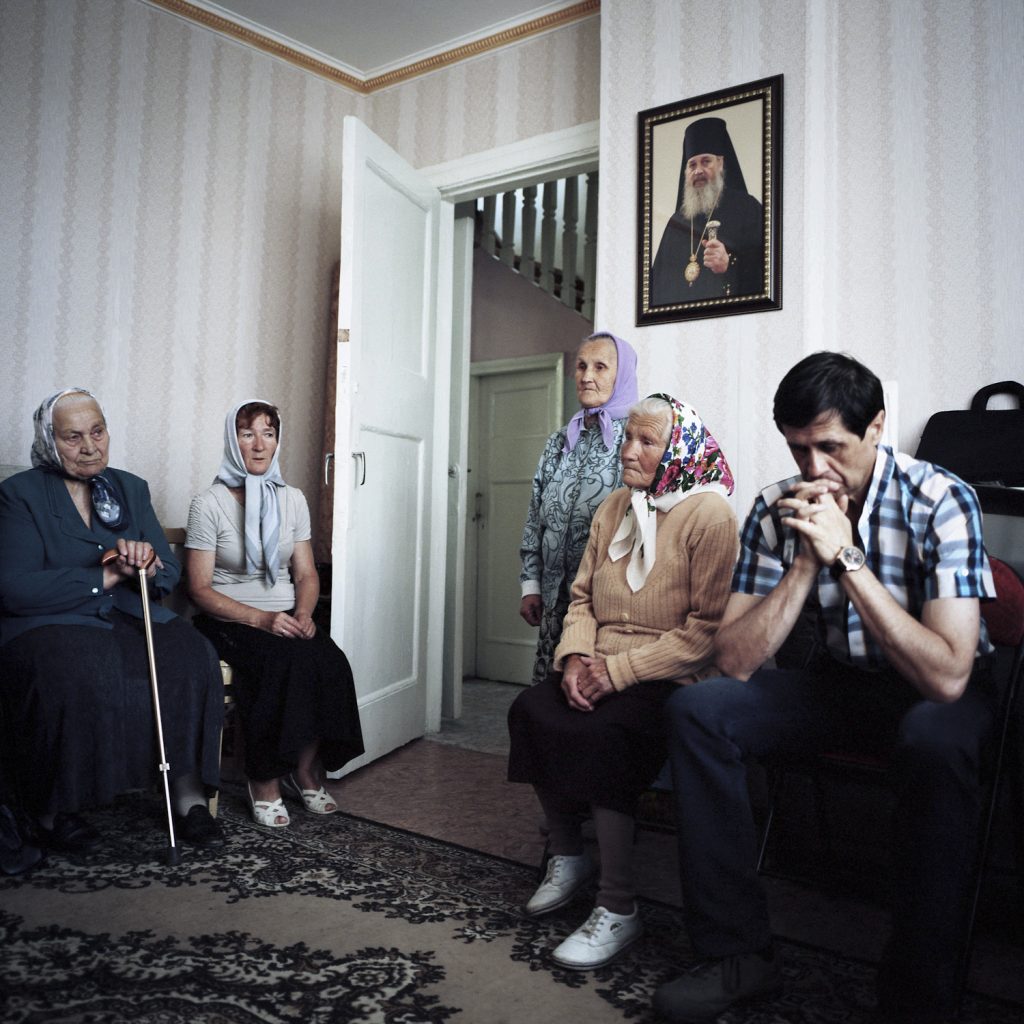Soviet legacy in Kazakhstan (2011)
Kazakhstan is trying to finally cut ties with the Soviet era on the dawn of the 20th anniversary of its independence. Its new capital Astana known as the «Dubai of the steppes » is the symbol of this modernity. Whilst all eyes are on it, the rest of the country remains profoundly marked by 70 years of a Soviet regime that used the country as its testing ground.
When the Soviet Union fell, Moscow brutally gave unwanted independence to the Kazakhs. From one day to the next thousands of soldiers and scientists left the country, leaving behind them dozens of ghost towns. These former military firing ranges, forbidden towns for local populations under Soviet rule, were home to arms programmes : ballistic missiles, nuclear bombs, biological weapons.
Sarry Shagan, anti-ballistic missile testing range that is more than 20,000 km2 in size, bordered Lake Balkash to the east, spreading deep into the deserted steppes of central Kazakhstan. The Soviets tested their ballistic missiles there but also laser weapon prototypes. After the fall of the USSR, the Russians kept control over most of the installations, creating real Russian enclaves within Kazakh territory. Soldiers from both countries frequented each other in the bazaars and cafés of the former closed city of Priorserk. Little by little the land is slowly being given back to Kazakhstan. Inhabitants from neighbouring villages now come and help themselves from the shells of remaining buildings. Metal, bricks, wood : as soon as a base has been abandoned it is reduced to nothing within a year.
Further north, not far from the Russian border, the Semipalantinsk firing range was home to the Soviet nuclear missile testing programme. Between 1949 and 1989, more than 456 nuclear bombs were tested there. The Soviet Union was right in the middle of the Cold War. On the 29th August 1991, Nursultan Nazarbaev, who was the then Secretary of the Kazakh Communist Party, responded to the anti-nuclear movement by closing down the site.
When the USSR fell, Nursultan Nazarbaev became president and signed the Nuclear Non-Proliferation Treaty. The region has been profoundly marked, a fact reflected in the bleak statistics : the highest thyroid cancer rate in the world, an area half the size of Belgium exposed to radiation.
The Baikonur Cosmodrome is the last pawn on the chessboard of Soviet military presence in Kazakhstan. Built in 1955, it was the pride of the USSR and started life as just a simple missile launch facility. The Cosmodrome became the showcase of military and scientific progress during the Cold War. The Space Race was in full swing and Moscow made headlines by putting the first living being into orbit around the earth : the dog Laika in 1957. This was followed by Yuri Gagarine’s flight in space in 1961. Baikonur is now the last remaining space launch facility still in action. It is a few hours train ride away from what remains of the Aral sea and has been rented by the Russians for 115 million dollars a year since the fall of the Soviet Union. Kazakhs are now beginning to gain permission to work in this closed city run by the Russian Army and where the ruble is the only currency. The real village of Baikonur was 300kms away and destined to deceive spies. In the long run the Russians plan to withdraw the Cosmodrome to a site inland in Russia, which will finally seal the fate of Russian military firing ranges and therefore Soviet history in Kazakhstan.
